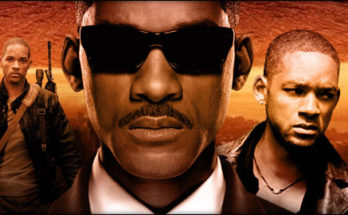THE BLACK SWAN (2010), Starring Natalie Portman, Mila Kunis, Seymour Cassel, Winona Ryder and Barbara Hershey. Directed by Darren Aronofsky, screenplay by Mark Heyman, Andres Heinz and John McLaughlin from a story by Andres Heinz.
What did Hitchcock, Val Lewton and H.G. Clouzot know that most directors of fright films today don’t appear to be privy to? Two things. One, less is more. Audiences are like kids; if you give them an inch, they’ll take a mile, so why give them the whole mile? The other is that the more you get to know and care about a character, the more effective a film is that puts them through the usual Lindy Hops of a cinematic thrill show.
Darren Aronofsky, who makes better movies than most who try, demonstrates with THE BLACK SWAN a solid understanding of the second principal but not much about the first. Then again, this is the director who showed a guy drill into his own skull in his freshman film, PI. Sometimes the in-your-face horror style works, but usually the more subtle methods are better. In a normal thriller the standard genre conventions on display would be completely tiresome, but since we get to know the characters in THE BLACK SWAN, particularly Nina Sayers (Natalie Portman, whom you may have heard one a gold statue for this performance), these tropes have resonance.
Sayers is a Ballerina in her late twenties working for a dance company in New York. Her career should be peaking soon by most standards since dancers’ careers tend to flounder when they reach their thirties, as years of injuries take their toll and younger, less battered dancers jockey for position. Nina lives with her mother, also a former dancer, and their relationship appears to be that of mother and adolescent rather than two adult relatives sharing an apartment. Nina is focused on perfecting her skills as a dancer above all other concerns. Her career appears to take a turn for the better when the director (Seymour Cassel) asks her to try out for his staging of Swan Lake. The production will feature the same dancer as both the fragile, sensitive white swan and the earthy, seductive black swan. The problem is, while Nina, a dedicated (obsessed, actually) and polished professional dancer with a limited social life (and who is possibly a virgin) is perfect for playing the white swan, its dark doppelganger is a bit outside of her comfort zone. Leroy says Nina needs to “let go” and lose herself in the role before she can master both parts.
Glaring at Nina with extreme hatred is Beth (Winona Ryder), once the company’s star but now getting long in the tooth by ballet standards. She is angry that she isn’t going to play the duel swan part and will soon be leaving the dance company – “retiring,” and not by her own choice. She’s bitter at Leroy, who is also her former lover, and jealous of Nina and the other young dancers. Her bitterness leads to self-destruction; when she is hit by a car and hospitalized, Leroy is certain it’s a cry for attention.
Then there’s Lily (Mila Kunis), a recent addition to the company and the id to Nina’s superego. Wild at heart and full of spontaneous energy, she and Nina become friends largely because each makes up for what the other lacks. She also becomes both an object of jealousy and an obscure object of desire for Nina, who fantasizes about a lesbian encounter with Lily at one point.
Nina gets the part. Nina plays the part. And she goes absolutely batshit.
There are several important and ever-present themes in this film. One is the dread of becoming insignificant with age in the artistic, creative world. Beth was once the company’s star, but even though she’s really not all that old by normal standards it has become Nina’s time, no longer hers. And biting at Nina’s heels is the still younger Lily. At the top of the age pyramid is the greatest bitterness. Beth despises Nina. Nina is distrustful of Lily. Lily tries to befriend Nina with mixed success but doesn’t seem to have any developed resentments yet. In Swan Lake itself, these roles are represented by the dying swan (Beth), the white swan (Nina) and the black swan (Lily).
Curiously, the actors playing these roles represent a similar dynamic. Winona Ryder was the beloved youth star of the late eighties and early nineties, but has since been eclipsed by scores of other young pretties while she deals with personal issues and bad publicity. The last notable film I saw her star in was GIRL, INTERRUPTED. To be honest when I saw her in THE TEN, it wasn’t until nearly the end that I recognized who she was, and I used to kiss the ground she walked on. Portman came along in the nineties as a child star, took the time to get an Ivy League diploma and as an adult actress can still bank on her glowing youthful beauty. Mila Kunis, for her part, is another young actress on the rise still best known for her television work. All three are thin, exceptionally attractive Jewish brunettes with overlapping cult followings and it’s impossible for me to forget this real-life parallel while watching the movie.
Another theme is that of the doppelganger, or twin, represented in Swan Lake itself by the white and black swans, and by Nina and Lily offstage. Twins representing duality and/or ambivalence, and as a harbinger of doom, is an ancient and vital theme in western art of all varieties. You’ll find it elsewhere too, but it’s rarely as important as in European and American literature, theatre, music, film and visual art. From Faust to Dr. Jekyll and Mr. Hyde to Ralph Ellison’s Invisible Man to 80s nighttime soap operas, competing twins are freaking everywhere. Nina needs desperately to bring the two opposing sides together within her, but she’s so used to being disassociated that as she does so, things get weirder and weirder. The closer she gets to being a whole, complete person, the more that the world she lives in, the world that seems normal to us, begins to fall apart.
This could only end tragically. That’s not spoiling anything if you’re familiar with Swan Lake at all, and if you’re not, the movie fills you in well before final curtain call.
This movie will bring to mind other films about duality and insanity, such as ALL ABOUT EVE and Polanski’s REPULSION and THE TENANT, among others. As I mentioned before, when things get crazy the movie abandons subtlety, to the degree that it was subtle at all, and goes all Jason on the audience’s ass. There’s the imposing music, the surprises that make you jump a bit and some slightly grotesque imagery that is probably meant to represent something, like Nina’s psychological descent. While this stuff does border on cheap sometimes, it works far better than it should because we give a damn about Nina and we’re put on edge when she feels she’s in danger.
I consider the Academy awards to be just a show, sometimes fun and sometimes not so fun (missed it this year, thank Hitchcock) and certainly not a mark of true quality, but I’m still happy for Natalie with her cute little golf trophy. She makes a perfect lead as the delicate, Audrey Hepburn-like dancer struggling to find the darkness within. Mila Kunis, who was sometimes grating on THAT 70S SHOW (more the character than her), is far better here as the wild, sexy interloper. Ryder, still a cutie, reminds us of how good she always was in front of the camera as Beth. Seymour Cassel makes a good douchey director with a grating sense of entitlement to the bodies of his dancers. Barbara Hershey, whom I haven’t seen in a while, is excellent as the overprotective mother of Nina.
I’ve rambled on at length about this movie and I could talk about it all night, if you want to buy me a few San Miguels and chat. Oddly enough, I wouldn’t really recommend this film to just anyone. It’s a bit intense and heady for your average mallrat, and seems a bit vulgar for the arthouse crowd too, even though they’ve clearly embraced it. If ballet is your thing, you won’t want to miss it, especially the finale.



